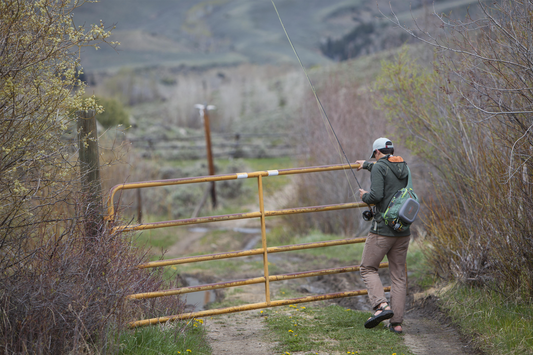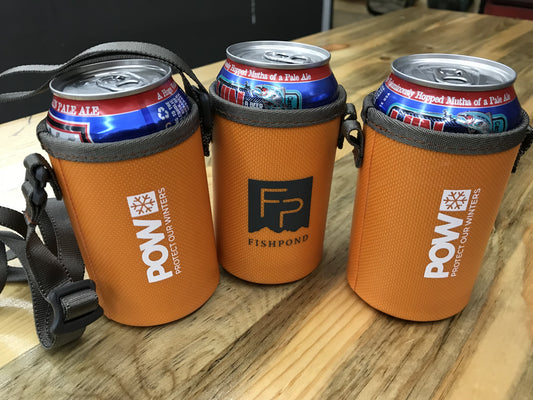NOT MANY PEOPLE REALLY UNDERSTAND WHAT IT TOOK TO MAKE THAT MOMENT A REALITY - THIS IS A TALE FROM THE NZ BACKCOUNTRY.
It might look glorious when you see someone standing in a crystal clear pool in the middle of nowhere New Zealand hoisting one of its prized trophy brown trout, but not many people really understand what it took to make that moment a reality. It’s more than just pulling up to the parking lot, lacing up your boots, rigging you’re a rod and hiking down to the river. Its days of blood, sweat, and tears (of joy of course) hiking into some of the most remote and beautiful areas of the South Island. The only way you're going to be able to make your dreams a reality in NZ is if you come to grips with the fact that you’re going to have to be comfortable with being uncomfortable…from start to finish.
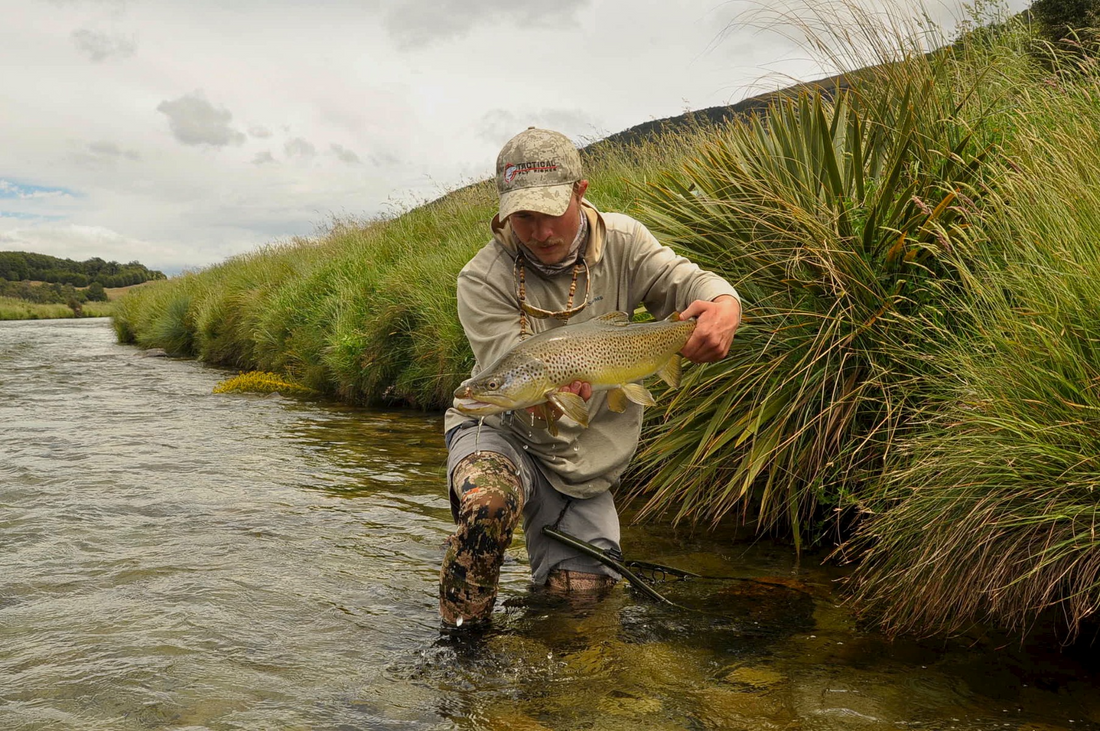
Conner Murphy @troutjockey | Making it look easy right? What it took to get to this moment was anything but easy.
Over the years we’ve all watched what is called the “New Zealand phenomenon” where social media erupts with
pictures of massive brown trout that have eaten dry flies. Well, me and my good friend Connor Murphy and I just
couldn't stand to sit on the sideline for another year. This was the year we were going to be there for the madness.
So we packed our bags and left our comfortable lives with well-paying jobs, a roof over our heads, girlfriends, and a
decent meal every night in order to live the dream. We were leaving everything behind to go seek an adventure to
remember for a lifetime. Even if it meant going broke in the process. There is always more time in life to make
money. We didn't have spare cash for fancy helicopters that could fly you over the dense unmarked beach tree forest,
guides to spot the tricky big fish laid up where Bill and Steve missed their shot last week, or even a fancy camper
van loaded with warm beds and electricity to charge anything one might need. I mean hell, we barely had enough money
to buy the bulk ramen and pasta to feed ourselves every day. All we had was years of fly fishing experience and the
will power to do anything to find ourselves some trophy fish, even if it meant risking our lives to get to the most
untouched waters we could find.

Lots of miles covered and rivers crossed. No helicopters, no support, just addiction and a passion for adventure.
The process of deciding which river to fish was always an adventure. We had done a fair amount of our own
research, studying all the TOPO maps we could get our hands on as well as talking to locals along the way. Even after
all that we found that the one crucial element to finding big fish was, the further you hike, the better the fishing.
So at that point in the journey, our focus changed from just finding fish, to getting as far away from civilization
(i.e helicopters, towns, and trails) as possible. We were so obsessed with the fishing that we couldn't help trying
to find the most inaccessible and absurd waters we could find, and when it really came down to it we had to choose
between safety or absolute discomfort. Discomfort of not knowing if we could make a raft out of old tire tubes, duct
tape and zip tie them to some drift wood on the beach, and use it as a floatation device that would transport our
seemingly “1 ton” packs across the unmanaged and dense river to begin the journey to the headwaters. Not to mention
if the storm that was projected to hit right after our departure arrived early, we might not be able to make it down
the valley to cross back over a severely blown out river. Sure it was risky, but these types of situations only come
so often and you’d hate to skip out on something that might change your life.
Great risk = Great reward.
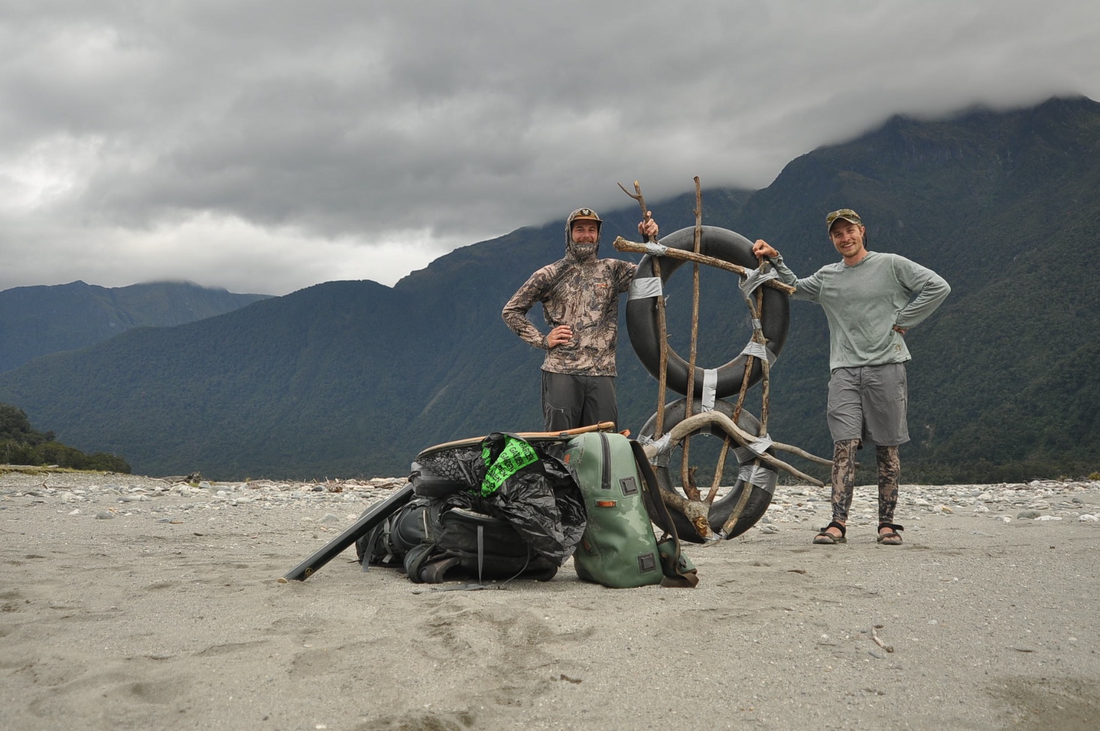
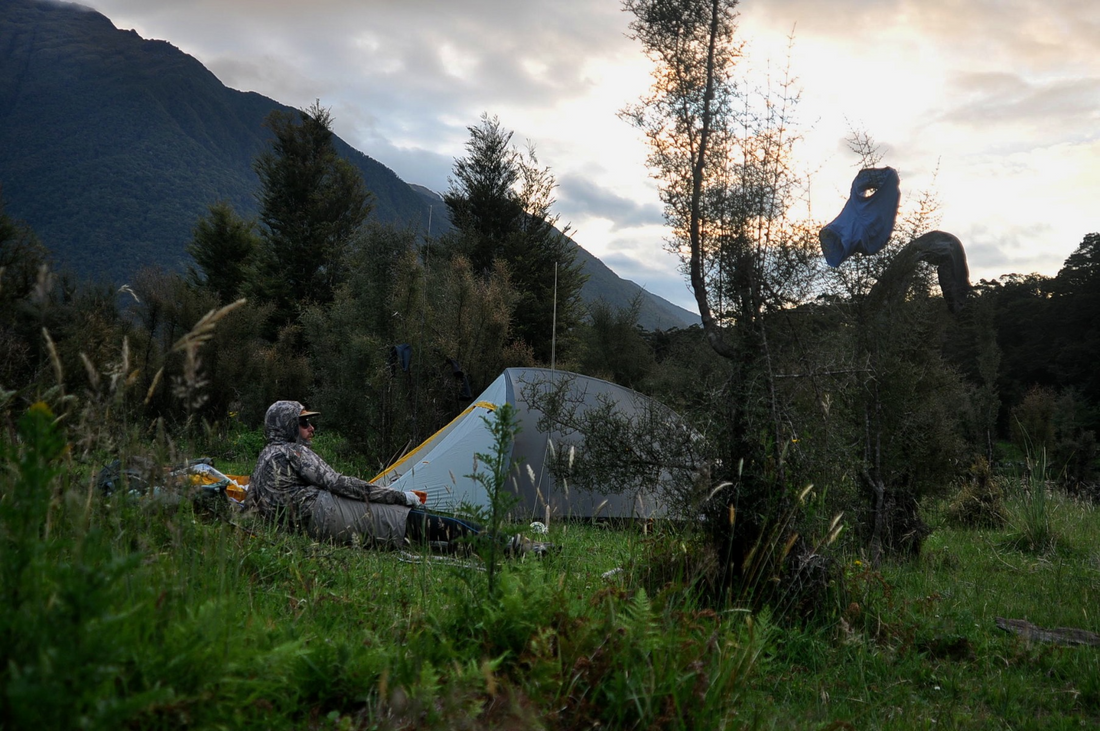
After successfully crossing the biggest roadblock in our way, it was time to march to the headwaters of this "unnamed" river and leave no fish unturned. Getting to the headwaters was one of the most challenging hikes I have ever been a part of and I will never forget the pain and discomfort I felt during that time. Sweating countless liters of water while getting absolutely covered by moss, spider-webs, and a whole lot more. There were points where I didn't think I could make it, times that we questioned our sanity, and just when I thought my body and mind couldn't take it anymore…we made it to our target destination! It almost didn't feel real when we finally approached the river, but we were filled with angst to reap the rewards of our hard work. Our theories on finding large trout by hiking extremely far away held true, and we quickly realized the magnitude of our discovery. Imagine walking up to the first pool of a river in the middle of nowhere, untouched by boot prints and filled with massive browns rising to any bug that hits the surface. It was pure magic getting to interact with these creatures on such a personal level. You truly do have a bond with each fish you approach and that is what makes it so incredible. From the moment you spot them to the time your fly hits the water, you have to analyze every possible variable to make sure all the pieces of the puzzle are in place. Crawling down to the river to get into position, stripping line off your reel, and then finally making the cast to the fish. Everything has to align perfectly when that fish eats. When you watch a fish rise in the backcountry your initial reaction is a jolting force throughout all of your muscles. But you need to contain those reactions with the confidence of knowing that everything is in place and is either going to happen or it's not. Once you connect with the fish you're mind locks up and all emotions are suppressed except for a healthy dose of fear and thrill. All you can think of is how to keep that connection to this wild and incredible creature that's thrashing at the end of your 5x tippet, sometimes leaping several feet out of the air. You can only breath once you've got it landed and your looking eye to eye with the fish in the net, picking it up getting to appreciate the beauty that is the Salmo trutta. But that's not always the case. Though there are the good times, we had our fair share of tricky fish, unconditioned days, and variables that were out of our control. With over 320 kilometers (roughly 200 miles) hiked, we had to earn our fair share of fish, and when something went erroneous it was devastating.
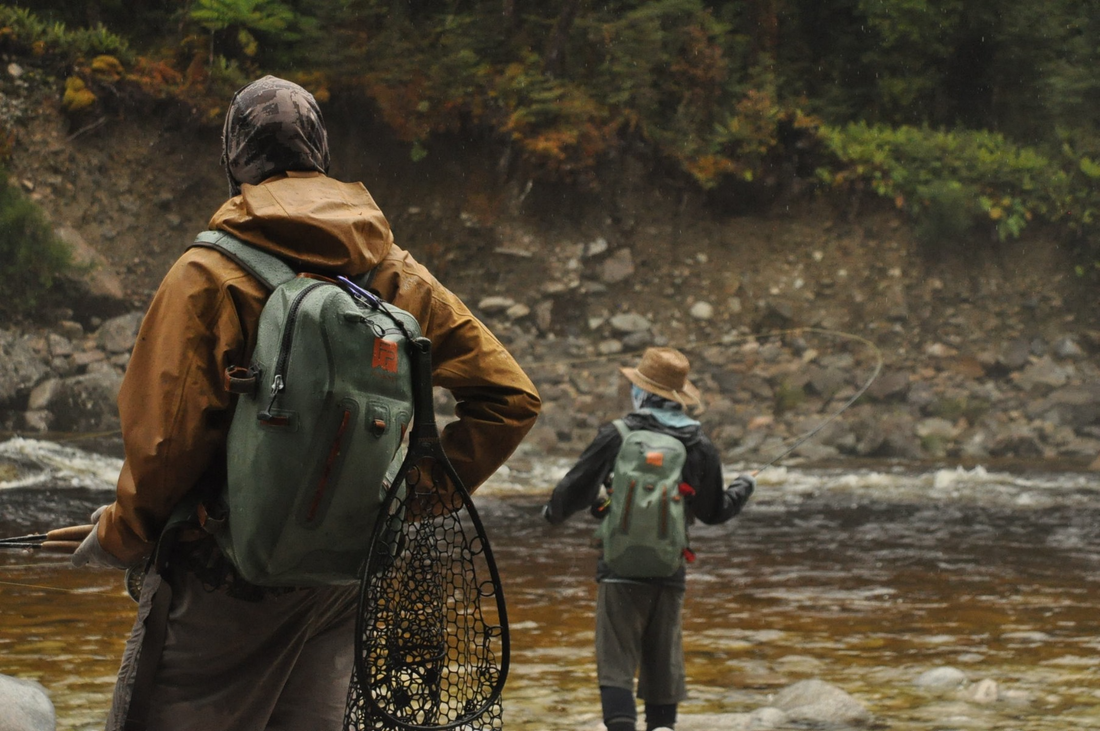
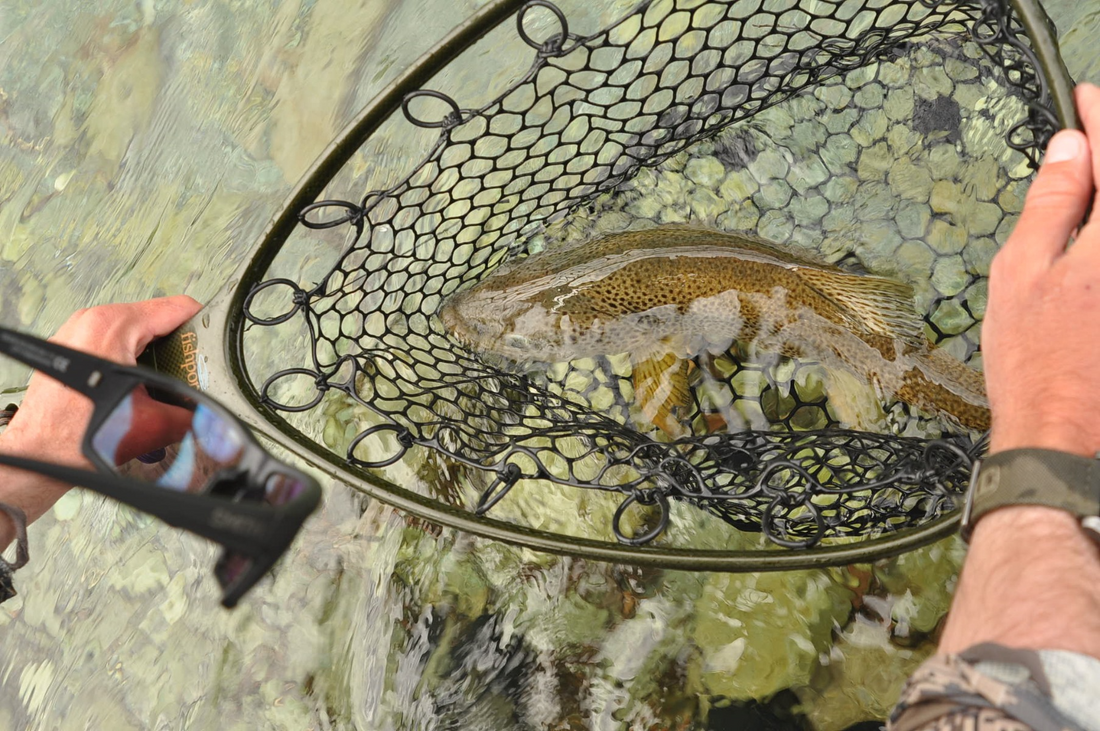
For some odd reason, there was always one factor that held true throughout all of our backcountry adventures. We always had amazing weather and great conditions until it was time to pack our bags and hike back to the car park. It seemed as if every time this was the case, and especially so for our daring adventure across the large glacial river and hack through the uncut jungle. We were already at risk of not being able to cross back a blown out river, and that night before our departure was one I will never forget. I remember waking up at 3 am to the sound of raindrops hitting the roof of our tent thinking to myself “that's not supposed to be happening for another 24 hours”. The rest of that morning was filled with anxiety and angst to get out of there as fast as possible. We had heard stories from locals of that area being extremely susceptible to flash floods. They come quick, with little warning and sometimes people get swept away, never to be seen again. Not us. We weren’t going to be another story on the news, so we got up extra early and got out of there as soon as possible. At this point in the trip, being uncomfortable was just apart of everyday life. Being soar from continuously hiking, having the cravings like a hungry pregnant woman, and constantly thinking of how magical a warm shower and bed would be. Sometimes you just have to forgo thinking of all that to focus on one thing. Making it out of the jungle and back to the safety of a car. The whole hike down was miserable; Pouring rain seeping into any open space it can find, every bush you beat around dumps its collected condensation on your pack making it even heavier than before, and each step you take has the potential to send you off a steep cliff down to the abyss. Needless to say, we were walking on pins and needles all the while trying to do it as fast as we can to avoid the torrential downfall that was happening throughout the whole region. The rocks were slippery and the ferns were wet, but eventually, after many kilometers, we came around the corner that we knew would decide the fate of our journey. It was the corner where we could finally see the large river we had crossed with assortment of driftwood, duct tape, tire tubes, and the thunderhead backpack. The whole way down we could see that the river had grown; we were just hoping it wasn't to the point where we couldn't make it across. It was such a relief when we saw that the river wasn't completely blown out. Not only was the river still crossable, but our raft that was built with old and used tire tubes stayed inflated. It was time for the last and final send. A couple of short cold breaths and frozen limbs later the adventure had come to an end. Sitting in our warm and dry car Connor and I turn to each other and say “Did that really just happen?” as if the past week had been all but a crazy vivid dream. We flip on the camera and start scrolling through the photos only to say “Yep…that just happen” in disbelief.
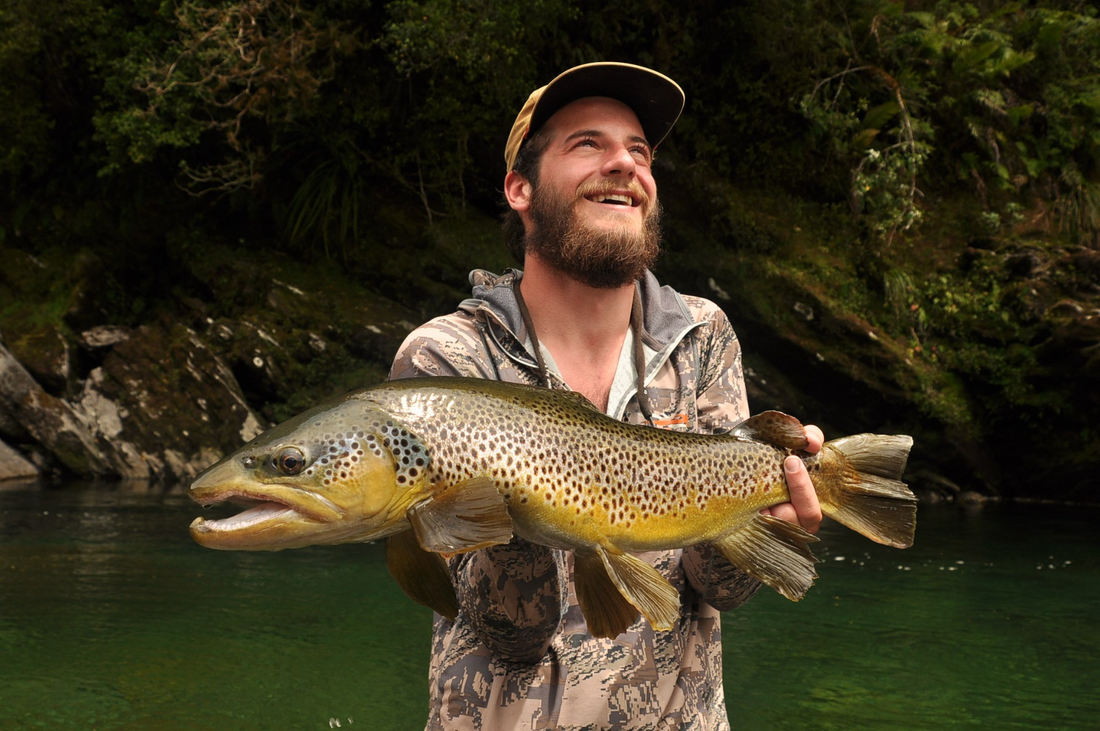
Thomas Wuster @fly_fishing_buck and Conner Murphy @troutjockey
Make sure to follow along with their adventures locally in Ft. Collins and anywhere big fish and adventure exist.
Products featured in this post | Thunderhead Submersible Backpack | Nomad Hand Net


